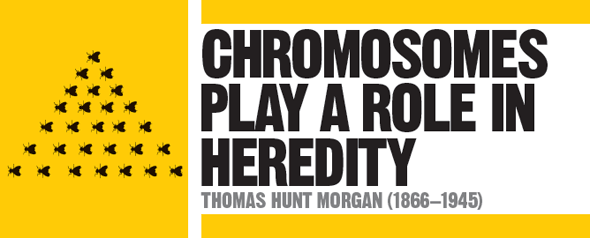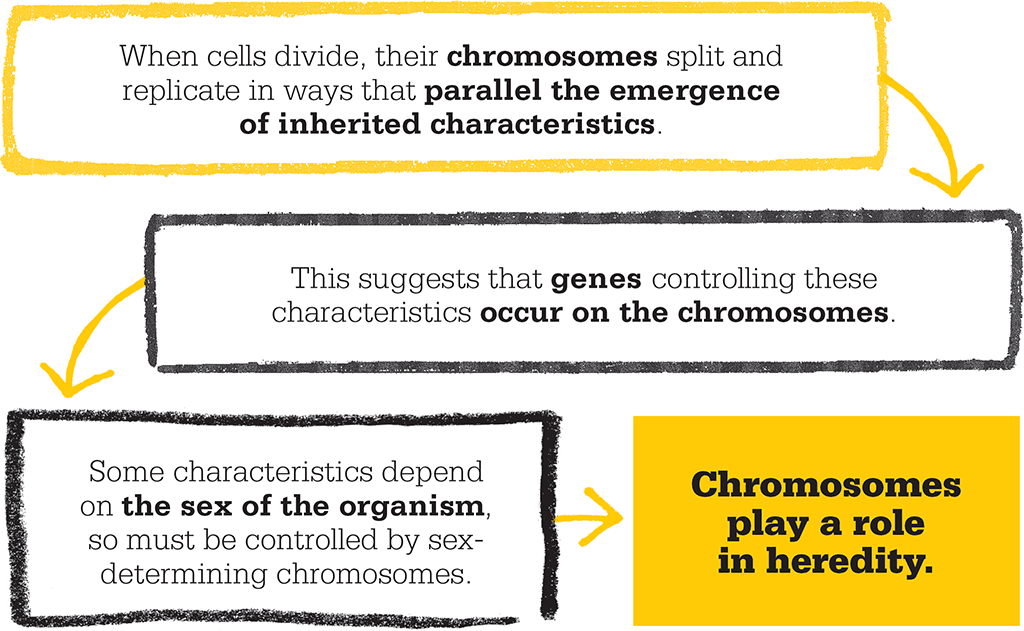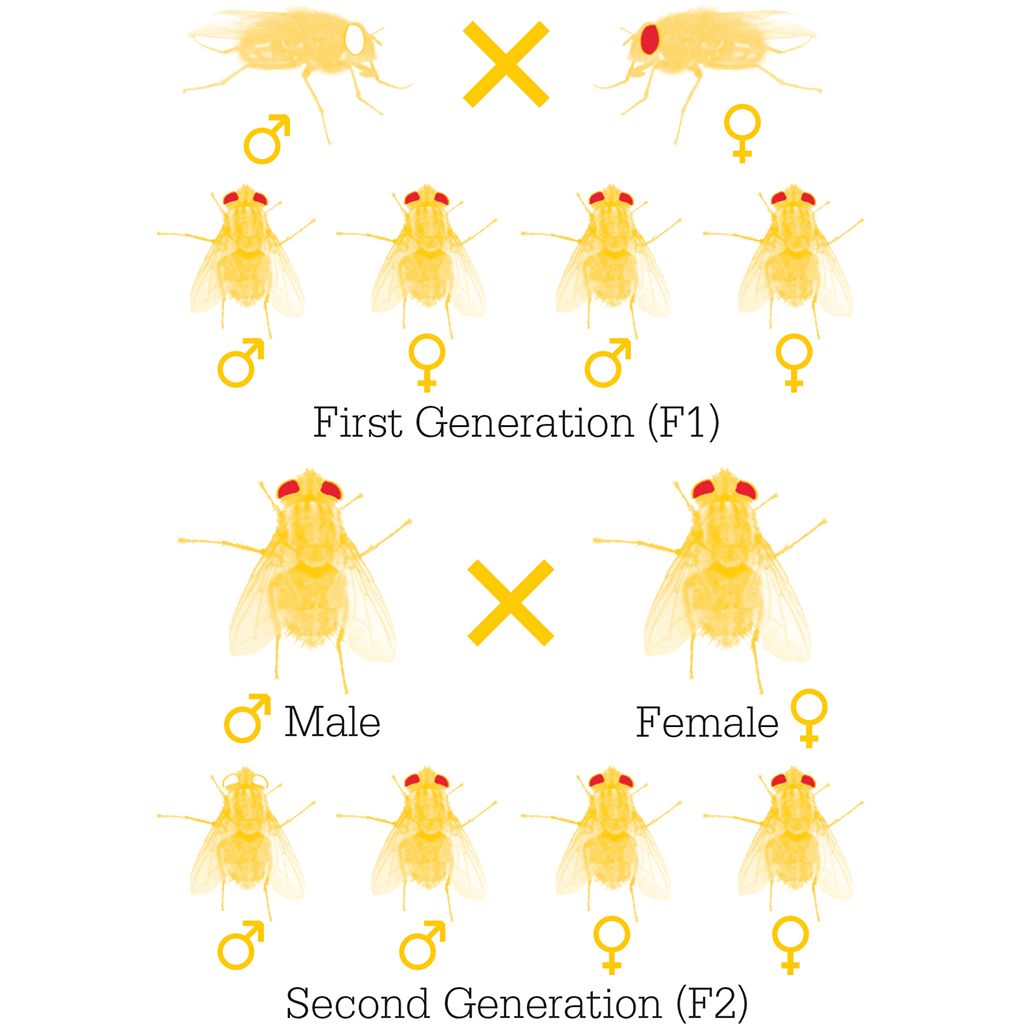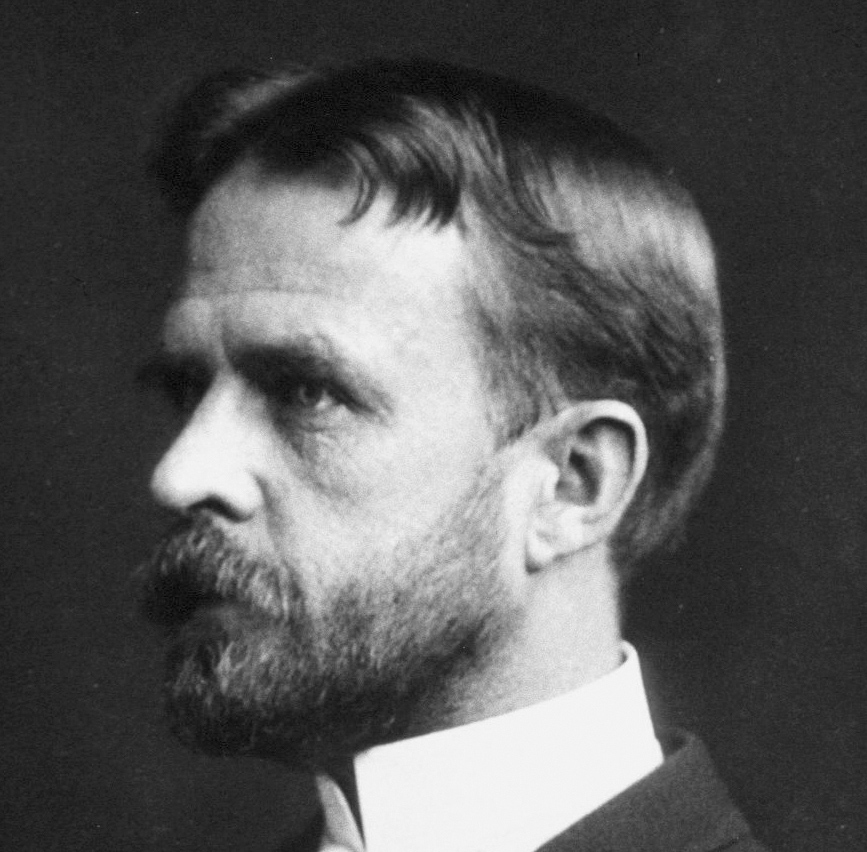
IN CONTEXT
Biology
1866 Gregor Mendel describes laws of inheritance, concluding that inherited characteristics are controlled by discrete particles, later called genes.
1900 Dutch botanist Hugo de Vries reaffirms Mendel’s laws.
1902 Theodor Boveri and Walter Sutton independently conclude that chromosomes are involved in inheritance.
1913 Morgan’s student Alfred Sturtevant constructs the first genetic “map”, of the fruit fly.
1930 Barbara McClintock discovers that genes can shift positions on chromosomes.
1953 James Watson and Francis Crick’s double-helix model of DNA explains how genetic information is passed on during reproduction.
During the 19th century, biologists observing cells divide under a microscope noticed the appearance of pairs of tiny threads in every cell’s nucleus. These threads could be stained by dyes for observation, and came to be called chromosomes, meaning “coloured bodies”. The biologists soon began to wonder whether chromosomes had something to do with heredity.
In 1910, experiments carried out by American geneticist Thomas Hunt Morgan would confirm the roles of genes and chromosomes in inheritance, explaining evolution at a molecular level.

Particles of inheritance
By the early 20th century, scientists had traced the chromosome’s precise movements at cell division, and noticed that the number of chromosomes varied between species, but that the number in the body cells of the same species were usually the same. In 1902, German biologist Theodor Boveri, having studied the fertilization of a sea urchin, concluded that an organism’s chromosomes had to be present in a full set for an embryo to develop properly. Later that same year, an American student named Walter Sutton concluded from his work on grasshoppers that chromosomes might even mirror the theoretical “particles of inheritance” proposed in 1866 by Gregor Mendel.
Mendel had done exhaustive experiments in the breeding of pea plants and, in 1866, suggested that their inherited characteristics were determined by discrete particles. Four decades later, to test the link between chromosomes and Mendel’s theory, Morgan embarked on research that would combine breeding experiments with modern microscopy, in what came to be known as the “Fly Room” at Columbia University, New York.
From peas to fruit flies
Fruit flies (Drosophila) are gnat-sized insects that can be bred in small glass bottles and can produce the next generation – with a great many offspring – in just 10 days. This made the fruit fly ideal for studying inheritance. Morgan’s team isolated and cross-bred flies with particular characteristics, and then analysed the proportions of variations in the offspring – just as Mendel had done with his peas.
Morgan finally corroborated Mendel’s results after he spotted a male with eyes that were white rather than the normal red. Mating a white-eyed male with a red-eyed female produced only red-eyed offspring, which suggested that red was a dominant trait and white was recessive. When those offspring were cross-bred, one in four of the next generation was white-eyed, and always male. The “white gene” must be linked to sex. When other traits linked to sex appeared, Morgan concluded that all these traits must be inherited jointly and the genes responsible for them must all be carried on the chromosome that determines sex. The females had a pair of X chromosomes, while males had an X and a Y. During reproduction, the offspring inherits an X from the mother, and an X or a Y from the father. The “white gene” is carried by the X. The Y chromosome has no corresponding gene.
Further work led Morgan to the notion that specific genes were not only located on specific chromosomes, but occupied particular positions on them. This opened up the idea that scientists could “map” an organism’s genes.

Cross-breeding fruit flies over two generations shows how the white-eyed trait is passed only to some males, through the sex chromosomes.
THOMAS HUNT MORGAN

Born in Kentucky, USA, Thomas Hunt Morgan trained as a zoologist before going on to study the development of embryos. On moving to Columbia University in New York in 1904, he began to focus on the mechanism of inheritance. Initially sceptical of Mendel’s conclusions, and even of Darwin’s, he focused his efforts on the breeding of fruit flies to test his ideas about genetics. His success with fruit flies would lead many researchers to use them in genetics experiments.
Morgan’s observation of stable, inherited mutations in fruit flies eventually led him to realize that Darwin was right, and in 1915, he published a work explaining how heredity functioned according to Mendel’s laws. Morgan continued his research at the California Institute of Technology (Caltech) and, in 1933, he was awarded the Nobel Prize in Genetics.
Key works
1910 Sex-limited Inheritance in Drosophila
1915 The Mechanism of Mendelian Heredity
1926 The Theory of the Gene
See also: Gregor Mendel • Barbara McClintock • James Watson and Francis Crick • Michael Syvanen